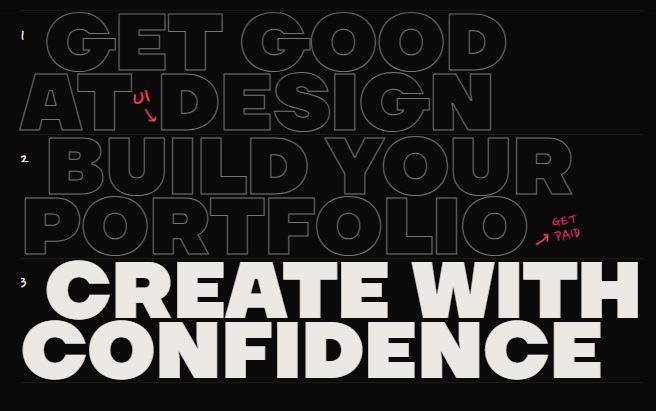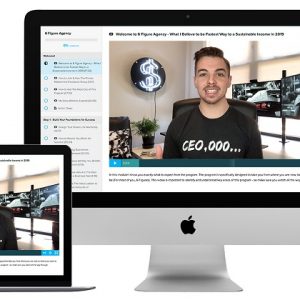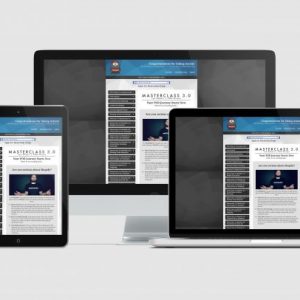No products in the cart.
Shift Nudge – Interface Design Course
$399.00 $39.00
- Payment method: I will send the payment link to your email.
- Deliver by: Google Drive, Mega.nz
Category: Marketing
Proof of payment:
Master the Perfect Speed UI – Shift Nudge’s Interface Design Edge. In today’s fast-paced digital world, achieving a perfect speed user interface is paramount for user satisfaction and business success. This article explores how the Shift Nudge Interface Design Course can equip you with the skills and knowledge to design interfaces that are not only visually appealing but also optimized for speed and efficiency.
Table of Contents
Perfect speed user interface
The concept of a perfect speed user interface extends far beyond mere loading times. It’s about creating a seamless and intuitive experience where users can effortlessly navigate, interact, and achieve their goals without any perceived delays or friction. It encompasses responsiveness, optimized content delivery, and thoughtful interaction design process that minimizes cognitive load and maximizes user engagement.
Components of a Perfect Speed UI
A truly effective high-speed user interface is built on a foundation of several key components all working in harmony. Firstly, front-end optimization techniques are vital, meaning minimizing HTTP requests, reducing image sizes, and leveraging browser caching. Effective interaction design process and efficient code are essential to ensure that the interface responds instantly to user actions. Secondly, backend optimization plays a crucial role, involving database optimization, efficient server-side code, and content delivery networks (CDNs) to serve content quickly to users regardless of their geographical location. A well-designed interface includes animations and transitions, but only if they’re implemented thoughtfully and efficiently; poorly executed animations can actually slow down the perceived speed of the UI. Finally, user perception also significantly influences the experience; clever loading indicators, progress bars, and micro-interactions can make waiting feel less tedious and provide users with a sense of control.
Think about your own experiences browsing websites or using apps. Have you ever been stuck waiting for a page to load, or struggled to submit a form because of lag? These sorts of problems immediately impact the overall experience and can drastically reduce satisfaction with the application. The speed of the user interface feels so critical because it directly impacts people’s time. Every second wasted is a tiny frustration that adds up over time. Therefore, investing in perfect speed user interface improvements is an investment in user happiness, because it respects the user’s time and improves their overall experience with the application or website.
Ultimately, perfect speed user interface and user experience is about understanding your users’ needs and designing an interface that anticipates their actions in a way that minimizes their waiting time. This isn’t only about pure computing power, but also about making your users feel in control. It requires a delicate balance among design, optimization, and perception.
The Impact on User Experience and Business Goals
The speed of an interface has a direct and measurable impact on user satisfaction, conversion rates, and ultimately, business success. Studies have shown that users are more likely to abandon a website or application if it loads slowly or responds sluggishly. Amazon famously calculated that every 100-millisecond increase in page load time cost them 1% in sales. Google has also emphasized site speed as a ranking factor in its search algorithms, further highlighting its importance. High abandonment rates are not merely a financial matter– they also reflect poorly on a brand’s reputation, because slow load times and lagging responses leave users frustrated and disappointed. This can result in negative reviews and harmful word-of-mouth that undermines a business’s long-term success.
In contrast, a fast and responsive interface can drastically improve user engagement, leading to higher conversion rates, increased sales, and brand loyalty. Users are more likely to explore a website or application if it feels snappy and intuitive. Faster load times translate directly to a larger number of pages viewed and more time spent on the platform, which means more opportunities for conversions and revenue generation. This virtuous cycle of improved user experience and increased business outcomes demonstrates how a perfect speed user interface is not just a technical matter, but rather a strategic imperative. Businesses that prioritize speed are investing in their user’s experience, thereby fostering long-term relationships and achieving sustainable growth.
It is important to remember that speed is not just about the numbers or the time it takes to load a page. It is also about how the speed is perceived overall by the user. Small details, like fluid animations and intuitive transitions, all play a part in creating a more positive perception.
Strategies for Achieving Optimal Speed
Several strategies can be employed to achieve optimal speed in interface design. Careful code optimization reduces the size and complexity of the code base, which can dramatically enhance performance. Optimizing images, videos, and other multimedia elements helps to reduce their overall size and ensures they load quickly without sacrificing quality. Implementing browser caching, as well as using Content Delivery Networks (CDNs), saves frequently accessed resources locally, reducing the need to retrieve them from the server every time a user returns to a page.
However, these technical aspects of speed are not enough by themselves. UI and UX play an essential role as well. Streamlined navigation, intuitive layouts, and clear call-to-action buttons can allow users to discover what they need more promptly. By reducing the number of steps required to achieve a goal, you not only improve the User Experience but also reduce the perception of latency.
Furthermore, careful consideration is needed with transitions and animations. These features can increase perceived speed by providing visual cues that the interface is responding, and in many situations can actually make the user feel more in control. It’s important to strike a balance between visual sophistication and performance, as excessive animations can weigh down the UI.
Another key strategy is to conduct thorough usability testing to identify speed bottlenecks and optimize the user flow. By observing how real users interact with the interface, developers can pinpoint areas where performance can be further improved. Remember, the goal is not just to make the application fast, it’s also to make the user feel like it’s fast.
Cosc ui/ux design waitlist
While a specific cosc ui/ux design waitlist may refer to a particular academic program, the underlying concept highlights the high demand for quality education in user interface (UI) and user experience (UX) design. This section explores the reasons behind this demand and the benefits of investing in formal UI/UX training. The surge in demand for skilled UI/UX designers reflects the growing recognition of the critical role design plays in the success of modern products and services. As digital experiences become increasingly important, companies are realizing that investing in user-centered design is crucial for attracting and retaining customers.
The Growing Demand for UI/UX Designers
The increasing demand for UI/UX designers stems from several factors. First, businesses recognize that user experience is a key differentiator in a competitive market. Products and services that are easy to use, visually appealing, and enjoyable to interact with are more likely to be successful. Second, the rise of mobile devices and web applications has created a need for designers who can create interfaces optimized for various screen sizes and devices. Third, technological progress has led to more complex software. UI/UX Designers assist companies in interpreting these complexities to make them more accessible to users.
This heightened demand has translated into a competitive job market where companies are actively seeking UI/UX designers to enhance products and improve user satisfaction. The Bureau of Labor Statistics projects strong growth for web developer and digital designer positions, highlighting the increasing importance of UI/UX skills. These professionals can significantly improve a company’s success by making products more user-friendly. Demand is expected to rise further as more and more companies transition to digital platforms and prioritize the overall customer experience. The cosc ui/ux design waitlist, as an indicator, reflects the limited availability of programs teaching these high-demand skills.
To become a successful UI/UX designer, individuals must develop a diverse area of skills in order to cater to the changing needs of the industry. Design principles, research methods, prototyping tools (like Figma or Adobe XD), and usability testing are all essential. In order to keep up with industry trends they also need expertise in areas such as virtual reality, augmented reality, and conversational interfaces. The intersection of design skills with a strong strategic mindset also allows UI/UX designers to influence product strategy and align user needs with business goals.
Benefits of Formal UI/UX Training
Formal UI/UX training offers structured learning, expert guidance, and practical experience, providing a solid foundation for a successful career in the field. These programs offer a comprehensive curriculum, covering fundamental design principles, user research techniques, prototyping methodologies, and usability testing methods. Unlike self-taught learning methods, a formal education offers structured lessons that ensure essential concepts are thoroughly covered. Furthermore, these programs expose students to varied design tools, which allow them to create interactive prototypes.
Instructors, who are experts and seasoned professionals in their fields, offer valuable insights. Students also learn to integrate theoretical aspects with practical use through real-world projects. In fact, these programs often offer internship possibilities, where students gain exposure to industrial difficulties. Formal training facilitates networking opportunities, enabling students to connect with professional contacts and potential employers. The advantages of formal education lead to a competitive advantage especially in the job market.
Students are better equipped for difficult projects and responsibilities when they have a strong understanding of UI/UX principles. Furthermore, formal training ensures students are up-to-date with industry changes, best practices, and creative applications. Taking into account these advantages, individuals seeking a professional career in UI/UX design should strongly think towards engaging in a formal education program. It gives the abilities, knowledge, and linkages needed for success in the exciting and developing discipline of user experience design.
Alternatives to Formal Training
While formal training offers significant benefits, alternative learning paths can also lead to a successful career in UI/UX design. Online courses and workshops provide flexible and accessible learning opportunities, allowing individuals to learn at their own pace and focus on specific skills. While online resources require self-discipline and motivation, they can be useful learning tools. Several platforms offer extensive coursework and certifications designed to validate skills. Self-directed learning through books, articles, and online tutorials, coupled with practical experience, can also provide a solid foundation.
Many successful UI/UX designers start by building their own portfolio through personal projects, volunteer work, or freelance opportunities. Constructing a strong portfolio, especially through designing and refining real-world projects, is essential even for those who have formal instruction. A portfolio shows a designer’s practical skills and innovation. Mentorship programs, design communities, or professional groups give possibilities for networking, getting comments, and discovering new industry trends.
Ultimately, the ideal method depends on an individual’s goals, learning preferences, and circumstances. Whether you choose a traditional academic program, self-study, or online coursework, the important thing is to be committed to continuous learning and skill enhancement, which will set you apart in the competitive world of UI/UX design. No matter what way you take, continuous development and refinement are necessary to remain successful.
Focus by mds
Focus by MDS, presumably referring to guidance and teaching methods provided by Matt D. Smith (MDS), emphasizes the importance of focused learning and skill development in interface design. This section explores how MDS’s expertise and teaching style can help students gain in-depth knowledge and confidence. It also highlights the value of personalized mentorship and a concentrated approach to mastering specific design skills.
MDS’s Expertise and Teaching Philosophy
Matt D. Smith (MDS) brings a wealth of experience and a unique teaching philosophy to his courses, emphasizing in-depth learning and practical application. The Shift Nudge briefing document explicitly mentions that MDS has extensive experience in interface design. Therefore, students benefit from his real-world insights. His teaching style focuses on delivering actionable knowledge that goes beyond theoretical concepts. Testimonials from students highlight that they greatly appreciate the practical insights they gain from MDS’s teaching style.
MDS prioritizes focused, intensive learning to help students master various facets of UI design skills. Central to MDS’s teaching approach is developing and improving individual student competences. Instead of providing a generic instructional strategy, MDS customizes the tutoring in consideration to his individual pupils’ individual needs. MDS’ commitment to provide thorough and deep educational experience distinguishes his mentoring strategy in the areas of UI/UX design.
His belief in an intensive approach to teaching is especially appealing in the current digital age, in which distractions overwhelm people. By positioning his students’ focus, MDS tries to ensure that they fully understand the underlying principles & subtleties of Interface Design.
Personalized Mentorship and Guidance
Personalized mentorship and guidance are integral components of MDS’s approach, providing students with tailored feedback and support. The Shift Nudge documents emphasize the active Slack community for students as a place for networking, but also for receiving support and comments. Direct interaction with MDS makes it possible for students’ specific difficulties and concerns to be handled in detail. This customized approach develops a sense of trust between students, with MDS offering tailored support and recommendations based on learning style and pace of each student.
This tailored mentorship helps students in improving their talents and self-confidence while designing sophisticated features. Furthermore, MDS’s mentoring gives chances for networking, helping beginners to establish connections with seasoned designers. Through such connections they obtain market insights, prospective ventures, and career development tips.
Through mentorship, MDS not only gives educational support but helps people gain experience that enables them to face complex UI obstacles with more originality, effectiveness & self-confidence. Mentorship programs are essential for aspiring designers looking to accelerate their abilities considering that they include not only teaching but also practical guidance.
Creating a Focused Learning Environment
Creating a focused learning environment is crucial for effective skill development, and MDS’s courses are structured to minimize distractions and maximize engagement. In fact, focus by MDS creates an atmosphere in which people can focus on skill acquisition and advancement without being distracted by extraneous elements. MDS’ course material has logical and progressive modules that build upon fundamental ideas while providing in-depth insights into UI design.
Specific attention is dedicated to building fundamentals, such as text, layout, and color which serve as building blocks for higher-level design endeavors, in line with course framework. Students improve their knowledge via extensive video courses, with each subject getting considerable attention, to ensure comprehensive understanding. In addition to the regular coursework, the provision of a huge library of analysis videos is crucial to teaching. Students can analyze design concepts via seeing real-world examples, learning to identify and eliminate errors.
Furthermore, opportunities that encourage group learning and networking are given so that individuals can effectively learn from one another. The presence of an active Slack community encourages the interaction of students, which facilitates collaborative peer learning. By promoting continuous networking & engagement, courses give an atmosphere that promotes concentrated study while also supporting long-term skill enhancement.
Mds certification
An MDS certification, earned upon completion of a Matt D. Smith course, signifies a high level of competency in interface design. This section explores the value of such a certification in validating skills, enhancing career prospects, and demonstrating a commitment to professional development. Let’s examine how the value of MDS certification goes beyond a simple credential, often opening doors to professional opportunity and industry validation.
Value of Certification in the Design Industry
In the competitive design industry, certification offers a tangible way to validate skills and stand out from the crowd. An MDS certification provides proof of proficiency in interface design principles and practices, demonstrating to potential employers that the individual has undergone rigorous training and assessment. Certification is frequently deemed essential since it assures companies that candidates possess specialized abilities required to meet industrial expectations. Furthermore, accreditation builds confidence. Having industry-recognized qualifications improves designers’ abilities and confidence levels while confronting complex problems or working with teams.
Certification fosters a commitment to continuing education. Designers typically get chances for lifelong learning, keeping them up to date on industry advances, emerging technological innovations, and best practices. Certifications improve credibility. By obtaining such certifications design specialists get credibility among peers, supervisors, & clients which may result to elevated customer satisfaction. Certification boosts professional standards. By pursuing licenses individuals contribute to the raising of quality and skill within design community.
Certifications enable companies to recognize as well recruit top individuals. Businesses may locate specialists who fulfill precise demands by evaluating certificates of candidates and hence improve the chance of successful project delivery.
Enhancing Career Prospects and Opportunities
An MDS certification can significantly enhance career prospects and open doors to new opportunities in the UI/UX design field. It can make a candidate more attractive to potential employers, increasing their chances of landing a job or promotion. Many businesses understand the credentials that are specific to industry due to certain competencies are confirmed. When selecting candidates, obtaining a degree considerably streamlines recruiting also selection procedure.
Certifications open doors for career promotion. Design experts with superior credentials are very likely to increase their level of expertise inside companies as they demonstrate readiness for increasingly sophisticated professions. Certifications are linked to increased incomes. Design specialists who invest in their skills and receive industry-recognized credentials are very often rewarded with much better pay packages than not qualified colleagues. Certifications foster career development. Individuals who want to advance their careers may employ licenses to gain access a wide range of employment opportunities as well as professional growth possibilities.
Certifications create networking. By pursuing licenses individuals become members of networking which provide chances for partnership, knowledge transfer & networking. Certifications enhance entrepreneurship. These people wanting to launch individual design firms may use licenses to enhance their credibility & draw customers.
Demonstrating Commitment to Professional Growth
Earning an MDS certification demonstrates a commitment to continuous professional growth and a dedication to staying current with the latest trends and best practices in interface design. Industry associations recognize persons that participate in certifications when this highlights one’s commitment towards professional qualities.
An commitment to lifelong learning is promoted through certifications. Professional growth via certification shows willingness participate in educational opportunities leading increased knowledge. Furthermore, certifications provide access to information. Design specialists certified often get opportunities access exclusive resources, mentoring scheme, and expertise.
A focus on ethical standards is offered through certification. Licensed professionals typically pledge for ethical considerations, which builds credibility within design sector strengthening moral performance. Lastly, certifications add to industry quality. If professional engineers get qualifications they elevate standards in community building excellence and invention.
Interaction design process
The interaction design process is a critical component of creating user-centered interfaces that are both functional and enjoyable to use. This section explores the key stages of this process, from user research to prototyping and testing. It also emphasizes the importance of iterative design and continuous improvement. Let’s discover that the interaction design process is not merely a sequence of steps yet instead, it is a comprehensive methodology for designing experiences which fulfill users’ expectations and business objectives.
Key Stages of the Design Process
The interaction design process typically involves several key stages: discovery, definition, designs, implement, plus test which guarantee that design solutions are user-centered. During discovery design team conducts research which includes interviews (users), examinations of surveys of stakeholders and competitive analysis to understand user requirements. During the definition of the team process analyzes information acquired during discovery to narrow down the project scope and also set objectives. At the design stage interface design teams begin by designing prototype ideas including wireframes mock-ups prototypes, which are assessed based on user experience.
The interaction Design Process involves implementation where the project is passed by team to design developers, who transform design ideas into working products while ensuring design and technology align and fit user expectations. To make sure designs developed are successful at testing they use testing during testing phase in real-world settings with real customers. Each piece of feedback acquired will later be utilized towards revising plans, developing prototypes, and optimizing customer experience repeatedly till project goals are accomplished effectively.
All these steps emphasize how a strategic yet user-centric planning contributes to developing exceptional user experiences while ensuring that the products/services meet target audience requirements effectively.
User Research and Analysis
User research and analysis form the foundation of the interaction design process, providing valuable insights into user needs, behaviors, and motivations. Designers employ various methods, including user interviews, surveys, usability testing, and analytics, to gather data and gain a deep understanding of the target audience. Methods of qualitative study such as interviews, focus groups and ethnographic researches aim at capturing the underlying causes that affect behaviour in a naturalistic situation.
Quantitative approaches, that include surveys, studies plus analysis, offer statistical data about consumers in terms of actions, settings, and demographics. The data are synthesized and analysed. In the method that is used to construct persona user profiles, which represents the major groups in target population and map client journeys so that we may anticipate every touch point, together with their emotion. Information is essential as the foundations of design decisions; designers assess the needs, suffering and wants of consumers.
In addition, user data helps us in the process of making empathy. This creates a sense that consumers and stakeholders are at par; hence it influences design choices in a manner that it suits users. In the long run, performing extensive user research and analysis allows the creation of useful and meaningful experiences by connecting designs with real-world needs and desires.
Prototyping and Usability Testing
Prototyping and usability testing are essential for validating design ideas and identifying areas for improvement. Prototypes range from low-fidelity paper sketches to high-fidelity interactive simulations, allowing designers to test different design concepts and gather feedback before investing in development. Usability testing entails observing users in real-time as well, as they interact with prototypes of the design so that there can be discovery of usability-related problems such as navigation confusions, errors and failures in achieving set-ups.
This is the basis of interactive and iterative designs that allow adjustments to user feedback during the design process. User involvement in usability assessments may be done through different approaches, including moderated sessions where moderators guide users through assigned task as well non- moderated situations where people engage with prototype freely. Data collected will further be scrutinized so patterns may be brought to table. The observations are then used to change or modify designs to improve user satisfaction usability or completion rates depending on the goal. The loop from creating prototypes and conducting usability tests and making changes serves to improve the user experience.
Usability testing involves real users interacting with your design that will not only highlight the areas needed improving, but additionally will ensure that products meet their needs from functionality and delight points of view. This process can then lead towards more robust products.
Shift Nudge
Shift Nudge is presented as a comprehensive interface design course designed to equip students with the skills and knowledge to excel in UI design. This section explores the main features, target audience, and benefits of the Shift Nudge course, highlighting its emphasis on practical learning and community support. Let’s see how the Shift Nudge course distinguishes itself from traditional resources by embracing a dynamic, industry-aligned approach to interface design education.
Core Curriculum and Learning Materials
The Shift Nudge course offers a structured curriculum, covering a wide range of topics from fundamental design principles to advanced UI techniques. This includes over 85 video lessons and an extensive critique vault containing over 1000 critique videos. The curriculum is focused around comprehensive training with clear lessons explaining the fundamental principles such as UX vs UI elements and basics such as typography arrangements, colours etc making it perfect for people new to designing. By concentrating on text size as well as weight, and grouping the headings plus main paragraphs with call outs to show the importance for each type Shift Nudge teaches the student skills needed create visually pleasant yet easy layouts.
The curriculum goes through complex ideas as well where designs on images factors components schemes like are important for UI that works effectively providing that. Live workshops which are available only to professional designers provide guidance directly taken right out into field settings providing students to ask directly so they learn practically too also not forgetting life-time memberships allowing users access revisit at free. With materials that focus both on foundation skills complex design techniques. Shift Nudge is sure give designers potential needed being experts at interfaces from different kinds ranging over different range screens sizes devices thus become real experienced professionals within era needing experts at making UI in designs.
Community Support and Networking
The Shift Nudge course places significant emphasis on community support, fostering a collaborative learning environment through its active Slack community with over 3000 members. The community is not only about getting help yet to network with colleagues, seek for criticism, and collaborate upon projects. The Slack platform is an invaluable means for keeping up with community posts and making sure everyone is current with best practice in designing. Moreover, the platform helps stimulate peer learning, and students who are engaged can learn from various perspectives as well as experiences hence enriching their education by gaining new information and experiences.
However, it is important to know that active mentorship together as participation within such forum contributes hugely in professional path and hence enables the students become part active design industry. Shift Nudge’s dedication provides that its students create high quality interfaces as well as contribute actively to world wide network of UI & UX professions ensuring that it’s all-inclusive and highly collaborative as is within professional community.
Testimonials and Success Stories
Testimonials from Shift Nudge students highlight the course’s effectiveness in building confidence, enhancing skills, and advancing careers in UI design. Gladys Foo, a Product Designer, stated, “Shift Nudge has not only helped me hone my UI and visual design skills, but it’s safe to say that I’m far more confident (and faster) in my craft than when I first started.” Such remarks highlight how course is helping improve not just student technical talent but is bringing in more sureness to them.
Joel Hooks also talks about the course as unparalleled resource concerning design learning implying how complete including well organised teaching this system have been created to become successful within world in design education. However, student such as Gladys has improved student skills greatly, course proves effective way concerning boosting design capability along career developing that making this resource efficient in one finding better career improving capacity within this area. All about evidence show just why Shift Nudge known becoming one valued in industry and is proving why this education resource important to experts.
Interface Design Course
A comprehensive Interface Design Course should cover a wide range of topics, from design principles to practical UI techniques. This section explores the key elements of an effective course, the skills students can expect to gain, and the career paths available to graduates. Let’s delve deeper into what constitutes a top-tier Interface Design Course and how such a program can act as a springboard into a rewarding career in the digital design space.
Essential Course Content and Structure
An effective interface design course should cover a range of topics arranged to give a complete education in the creation of interfaces that are both user-friendly and visually attractive. The basis concepts in UI/UX design, typography best practices and grid set up, as well understanding colour theories as important. Courses ensure that student gains strong fundamentals after successful project in hand through course. Course covers wireframing, prototyping high fidelity. Students are taught design software tools in particular, like Figma, Adobe XD. Courses give much stress over user research, and usability assessments which are main components within process.
Important areas like responsive design accessible designs and micro-interaction are taken good consideration by course providers to ensure people have skills in that specific field. Course structure must be systematic with theoretical lectures along with practical workout; that makes both students learn from each other as well as applying those teaching within their projects. Course structure is aimed at enhancing learning and understanding by offering knowledge and hands-on possibilities to use the concepts and instruments needed to succeed for designing effective user. Through adopting a course with varied contents, arrangement; aspiring designers are well ready to tackle real-world problems also by generating interesting UI designs used throughout today’s technological world.
Skills and Competencies Developed
A good interface design course equips students with a wide range of skills and competencies essential for success in the field. Course is focused on enhancing students’ ability to find resolution over problem designing through user centric. The students also enhance their ability over using designs to tell a visual tale. Skill is vital to communicating effectively, through designs, including being able to work efficiently in teams during creative process plus presenting.
An important competence students often learn throughout a design educational program is the capacity for them, for using design thinking approaches. These are what help drive them for creating concepts, fast making models plus constant test with users in order to produce better design conclusions overall. So finally any training must involve training for how they might always learn more, given what is newest tools available. These kinds of talent and capabilities are very significant if you want to stay ahead within highly active fields particularly like UI production in this world.
Career Paths and Opportunities
Graduates of an interface design course can pursue various career paths, including UI designer, UX designer, product designer, and web designer. UI designers are responsible for the visual aspects of the interface, ensuring that it is aesthetically pleasing and easy to use. The average salary for UI designers in the United States is around $85,000 per year, but this can vary depending on location, experience, and company size. UX designers focus on the overall user experience, conducting research, creating user flows, and testing prototypes.
Product designers play a broader role, working with cross-functional teams to define product strategy and design user-centered solutions. Web designers combine visual design skills with technical knowledge to create functional and attractive websites. The skills acquired a in a complete Interface Design Course prepare people for rewarding jobs in IT, marketing, and e-commerce industries by enabling them enhance digital interactions which benefit people as global companies.
Conclusion
In conclusion, mastering the perfect speed user interface is essential for creating engaging and effective digital experiences. Courses and programs like Shift Nudge’s Interface Design Course provide structured learning, expert guidance, and community support to help individuals develop the necessary skills and competencies. A focus on practical application, personalized mentorship (like that offered with focus by mds), and continuous professional development (validated by an mds certification) are all key to success in this dynamic field. Whether you are an aspiring designer, a developer looking to enhance your skills, or a project manager seeking a more creative role, investing in quality interface design education is a strategic move that can unlock new opportunities and drive career advancement. The principles of great interaction design that are learned in the interaction design process, combined with a practical approach to a perfect speed user interface can lead to better experiences in the end. Ultimately, your efforts will have a greater chance of producing high-quality designs. All in all, cosc ui/ux design waitlist highlights the demand in the market so grab your spot to make your work experience efficient.
Sales Page: _https://shiftnudge.com/
Be the first to review “Shift Nudge – Interface Design Course” Cancel reply
Related products
$85.00
$25.00
Sale!
Marketing
$20.99













Reviews
There are no reviews yet.